This document presents a research project on multi-document summarization using closed patterns, aimed at efficiently extracting informative sentences from a collection of documents. The proposed solution addresses challenges posed by the vast amount of electronic documents and aims to reduce information redundancy through a pattern-based model. The methodology includes a comprehensive evaluation using datasets like duc2004 and techniques such as the ROUGE metric for assessing summary quality.
![Multi-Document Summarization using
Closed Patterns
Superviser: Ms. Zakia Jalil
Co-Superviser: Ms Sabina Irum
Presented by
Hafsa Sattar [2896-FBAS/BSCS/F14]
Uswa Ihsan [2822-FBAS/BSCS/F14]
Department of Computer Science & Software Engineering
Faculty of Basic &Applied Sciences
International Islamic University, Islamabad.](https://image.slidesharecdn.com/projectpresentation-221213162747-5ea4bc69/85/Project-Presentation-ppt-1-320.jpg)


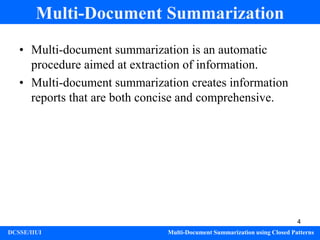
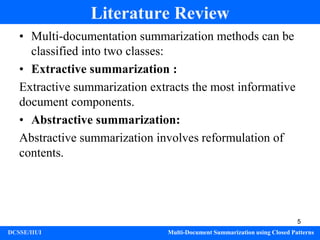

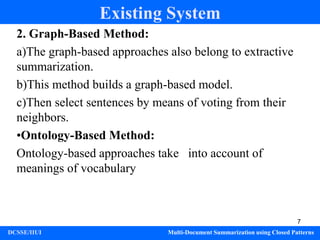
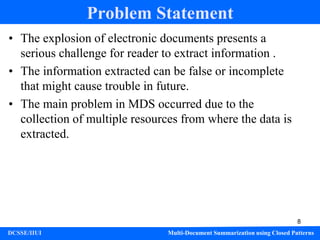


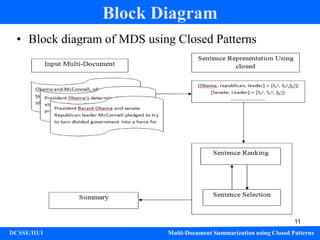
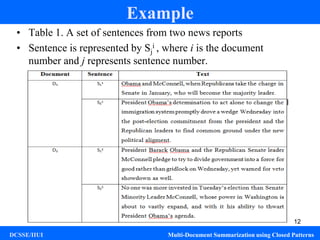

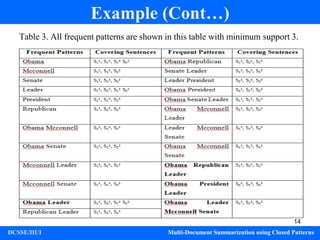
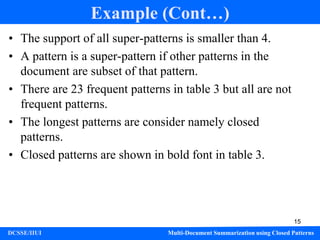







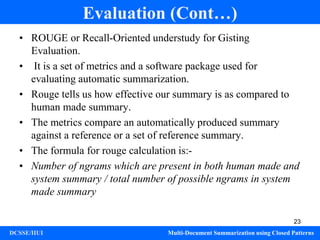

![25
References
DCSSE/IIUI Multi-Document Summarization using Closed Patterns
[1] Ji-Peng Qiang, Peng Chen, Wei Ding, Fei Xei, Xindong Wu,
Multi-document Summarization using Closed Patterns, Knowledge
Based System (2016).
[2] https://en.wikipedia.org/wiki/Multi-
document_summarization
[3] https://www.slideshare.net/LiaRatna1/sinonim-38250183
[4] https://www.hindawi.com/journals/tswj/2016/1784827/
[5] https://en.wikipedia.org/wiki/ROUGE_(metric)
[6] https://www.quora.com/What-is-the-meaning-and-formula-
for-the-ROUGE-SU-metric-for-evaluating-summaries
[7] https://en.wikipedia.org/wiki/N-gram
[8] https://en.wikipedia.org/wiki/F1_score](https://image.slidesharecdn.com/projectpresentation-221213162747-5ea4bc69/85/Project-Presentation-ppt-25-320.jpg)
